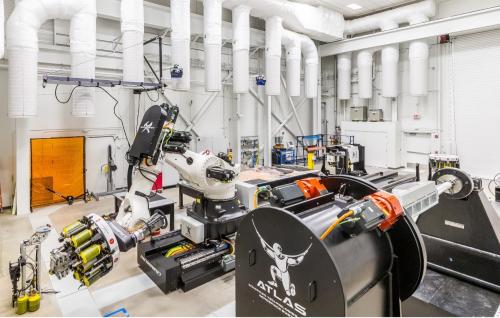Six years into the recovery from the Great Recession, the U.S. economy is still seeking a solid footing. With 95 percent of the world’s consumers now living outside the United States, and an estimated 83 percent of global GDP growth occurring there, part of the solution lies in our firms and workers connecting to ever-growing international sources of demand and capital.
Yet close to home, the United States has a significant but mostly unrecognized global asset: the more than half-million foreign students who are currently pursuing degrees at American colleges and universities.
In a recent Brookings report released as part of the Global Cities Initiative, a joint project of Brookings and JPMorgan Chase, Neil Ruiz illustrates the many ways foreign students contribute to American economic competitiveness and connect our cities and metro areas to opportunities around the world. On a basic level, they bring revenue into local economies by paying tuition and living costs, an estimated $35 billion between 2008 and 2012 alone.
Contributions beyond money
However, foreign students’ contributions go far beyond money. They can form invaluable bridges between the economies of their native countries and their adopted homes in the United States. Their knowledge of the languages, cultural norms and business practices in their source countries represent key assets for local businesses hoping to connect to global market opportunities, especially in the large emerging markets like China, India and the Middle East from which so many of those students originate.
Furthermore, two-thirds of foreign students study STEM fields or business, management and marketing, compared to less than half of U.S. students. Pursuing those degrees provides foreign students with the substantive tools and training to help businesses and institutions connect internationally for mutual economic benefit.
These assets are of particular importance to the places where foreign students concentrate in the United States—namely, our large cities and metropolitan areas. As the Brookings report documents, roughly 85 percent of these students attend colleges and universities in 118 metropolitan markets around the country. And local leaders in the public, private and educational sectors are at the forefront of strategies to engage these students to support local economic growth.
Building international strategies
Some business schools are already offering consultancy services to build international strategies for local companies. At the University of Southern California (where there are the largest number of foreign students), the Marshall School of Business has deployed the knowledge, networks and language skills of their international MBA students for more than three decades to benefit Los Angeles-based companies. As part of their coursework, USC’s MBA students produce international business strategies equivalent to those produced by top-tier consulting firms.
A similar program is underway at Syracuse University through its Center for International Business Studies. Through that program, foreign students are taking advantage of the Curricular Practical Training (CPT) program to work on international business plans as employees at local firms. The experience that foreign students gain through the CPT program can also increase their chances of staying in the Syracuse area and contributing to the local economy after graduation.
Strengthening relationships
Foreign students can also strengthen important institutional relationships. In greater Chicago, local university leaders are bolstering the Global Cities Economic Partnership, a first-of-its-kind city-to-city trade agreement between Chicago and Mexico City, by intensifying the strong educational bonds that exist between the two metro areas. Two Chicago universities— the University of Chicago and Northwestern University—are among the top five destinations s for students from Mexico City in the United States. To capitalize on this, the University of Chicago’s Harris School of Public Policy and the Mexican National Council on Science and Technology (known as “CONACYT”) recently signed an agreement for CONACYT to provide scholarships for Mexican citizens pursuing masters and doctoral degrees at Chicago Harris. This initiative is part of a broader partnership between the Chicago Harris School and the Mexican government that has fostered a number of projects in the health policy sector.
Increasingly, our nation’s city and metro leaders recognize that to deliver jobs and growth locally, they must connect globally. Foreign students are an underutilized resource for advancing those goals. Engaging those students can enhance their educational experiences while strengthening regional economies at home and abroad.
The commentary was originally published by Forbes.


Commentary
Op-edForeign Students: A Significant But Unrecognized Global Asset
November 25, 2014